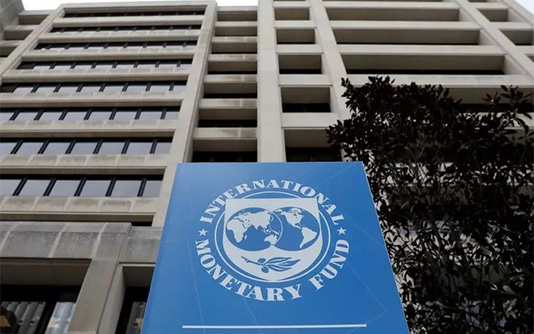WASHINGTON, March 12, 2021 (BSS/AFP) – US President Joe Biden’s stimulus
program is being hailed as both boosting domestic growth and spurring the
global recovery, but the IMF warned that policymakers will need to be alert
to risks posed by the massive spending as well as low interest rates.
The package, which Biden signed into law on Thursday, will inject $1.9
trillion in aid into the pandemic-damaged economy by funding small
businesses, extending unemployment benefits that were due to expire in days,
and sending direct payments of as much as $1,400 to many Americans starting
this month.
That spending will expand US GDP by five to six percent over three years,
according to the IMF’s preliminary estimates.
And higher demand will help other countries sell more products to American
consumers, the fund’s spokesman Gerry Rice told reporters Thursday.
“We see potentially significant positive spillovers in terms of global
growth,” he said. “Most countries should benefit from stronger US demand…
so this will help global growth and recovery.”
However, he cautioned that with low interest rates, policymakers worldwide
should be on the alert for a sudden shift in borrowing costs.
That has been a growing concern for financial markets in recent weeks as
accelerating Covid-19 vaccine rollouts offer hope of a rapid recovery, but
also sparked fears that growth could ignite an inflationary spiral that would
force the Federal Reserve to raise interest rates sooner than expected.
The concerns have sent stock markets reeling in recent sessions, especially
tech shares, which are more likely to be hindered by rising lending rates.
– Monitoring risks –
Fed Chair Jerome Powell has repeatedly tried to calm financial markets,
saying that policymakers have no intention of reining in stimulus or raising
the benchmark interest rate until inflation is holding solidly above two
percent and employment has recovered.
He acknowledged that inflation could jump this year compared to the
depressed rates during the pandemic restrictions in 2020, but said those
price spikes are likely to be “transitory.”
Brian Deese, director of the White House National Economic Council, said
the administration is focused on the recovery but monitoring inflation.
“This is a risk, like many, that we are going to constantly monitor and
keep our eye on,” Deese said on CNN when asked about one private forecast
that projects 2.8 percent inflation this year.
Some economists including former Treasury secretary Larry Summers and
former IMF chief economist Olivier Blanchard cautioned that the rescue
package could add too much fuel to the economy.
But the White House has downplayed those risks, and Deese said “we still
have enormous slack in the economy.”
The IMF, too, has largely dismissed inflation worries, saying the rate this
year could increase to 2.25 percent — which is unlikely enough to trouble
the Fed.
But Rice said the risks mean the Federal Reserve and other major central
banks must communicate “clearly” about their outlook and policy plans “to
avoid any unwarranted tightening of financial market conditions.”
– Back to full employment –
As he signed the measure, Biden called it “historic” and said it “is about
rebuilding the backbone of this country.”
Deese said the administration will begin sending stimulus checks to many
Americans later this month.
Added to the other measures, the plan could return US employment to its
pre-pandemic level a full year earlier than previous estimates of a 2024-2025
recovery, he said.
Deese called the lost jobs one of the “most harrowing” remnants of the
crisis, and a fast recovery will help workers who are often excluded from the
labor market, including racial minorities.
“We are certainly hopeful that we’ll see strong and robust growth this
year, which is what we need to actually get back to full employment quicker
and get out of what is still a very serious jobs hole,” Deese said.
Jobs have returned across the United States as businesses have slowly
reopened but millions are still unemployed.
New applications for regular US unemployment benefits continue to decline,
but totaled 712,000 last week, and nearly 1.2 million claims were filed last
week if special pandemic programs are included, the Labor Department
reported.
More than 20 million people were receiving some form of benefit as of
February 20, and last month’s employment report showed the economy is still
short 9.5 million jobs compared to a year ago.
The Organization of Economic Cooperation and Development (OECD) recently
upgraded its forecast for US growth to 6.3 percent — nearly double the
previous forecast — and global growth to 5.6 percent due to rising
vaccinations and the stimulus plan.
The IMF in February projected world growth of 5.5 percent this year, and US
GDP expansion at 5.1 percent, but the fund will update those forecasts early
next month at the start of its spring meeting.



